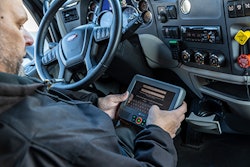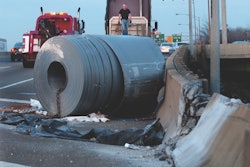Long gone are the days when fleets merely looked at initial purchase price to determine whether to buy a new truck or trailer. Today’s savvy fleet owner considers a number of factors to determine the true cost of an asset over its life.
 Mike Hamilton, senior vice president of sales, Capital Equipment Solutions, Corcentric
Mike Hamilton, senior vice president of sales, Capital Equipment Solutions, CorcentricWhile there is no one set formula for determining total cost of ownership (TCO), there are some basic hard costs you want to make sure to include in your calculation.
- Acquisition cost (with and without extended warranty)
- Residual value
- Monthly fixed cost payment (including interest)
- Historical fuel cost (actual miles driven/gallons pumped)
- Maintenance costs (historical cost for each year of vehicle operation)
- Cost of roadside breakdowns
- Insurance cost
- Licensing and fuel tax processing costs
- Substitution costs for maintenance downtime (rental truck expense)
These are factors that you can put real dollar costs to, but are not the only factors you need to consider in your TCO calculation. You might also consider adding a value for some soft costs, including things like driver recruiting/retention items added to the vehicle; safety related technology features and the value of eliminating one accident; company image; other corporate goals, like sustainability; and downtime cost.
Knowing the TCO of an asset can help you determine the most cost-effective time to retire that asset and bring a new unit into the fleet.
When analyzing when to replace an asset some tips include:
- In addition to current fuel cost, consider fuel at $2 per gallon and at $3.50 per gallon.
- Make sure you consider the historical fuel economy in the current year compared to conservative new truck projections.
- Compare your replacement decision results with and without tire costs.
- Make sure you are accounting for a fully depreciated asset.
- Maintenance cost is usually higher than you budget for these assets.
- Fuel economy decreases as units get older.
- Are locations holding units they could eliminate because there is no fixed charge?
- Have you looked at the remarketing value of your asset in today’s market? Are you sure you have set the risk tolerance properly?
It is also difficult to determine exactly what value to put on the soft cost. How much is it worth to be able to attract and retain drivers because you have invested in new technologies that are attractive to drivers?
When performing your TCO calculation, include all relevant information so that you can make sure you are getting the most out of your equipment investments.
Mike Hamilton is Senior Vice President of Sales, Capital Equipment Solutions, for Corcentric. He is responsible for large business development opportunities and major accounts for Corcentric Capital Equipment Solutions.










